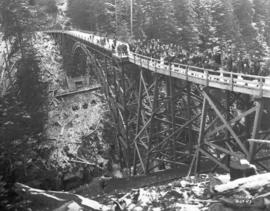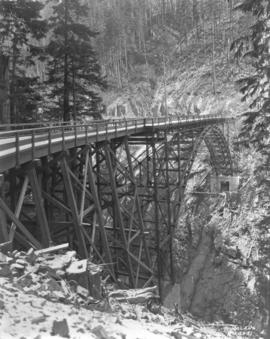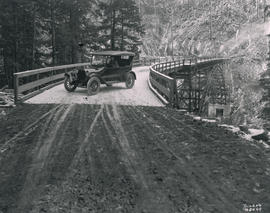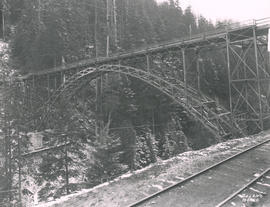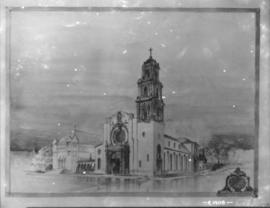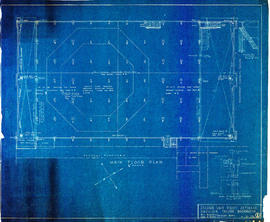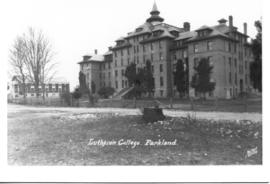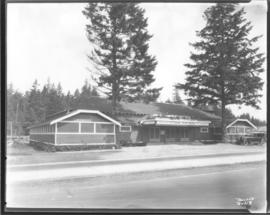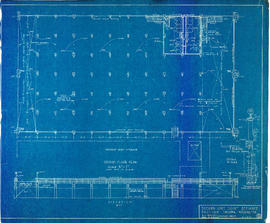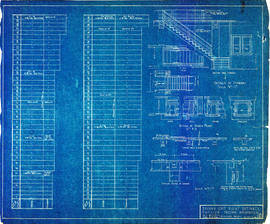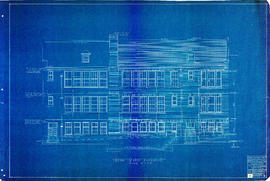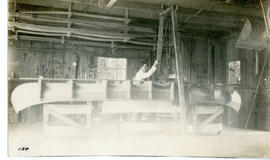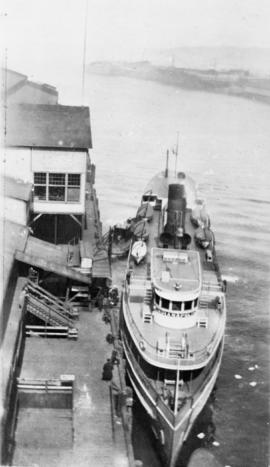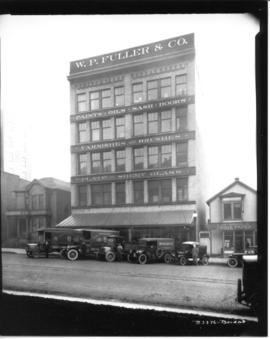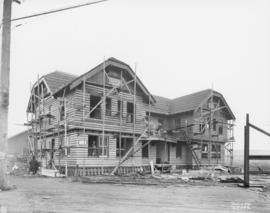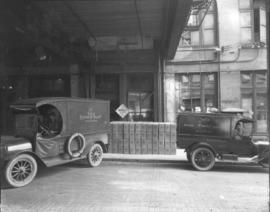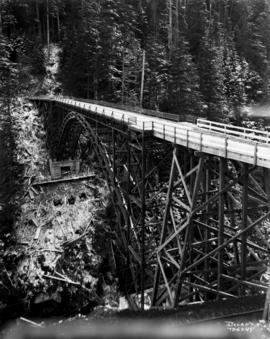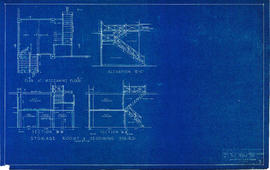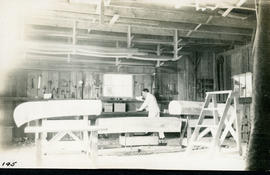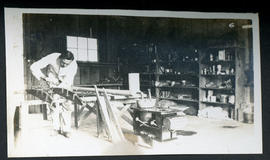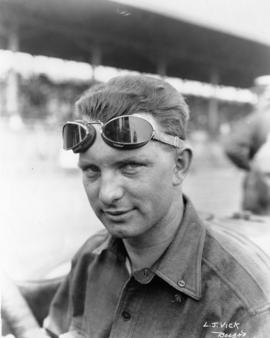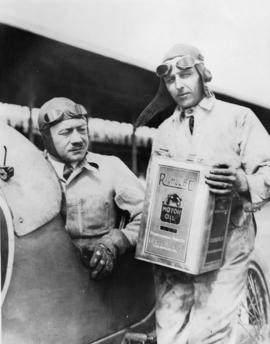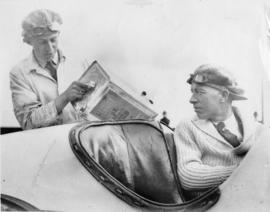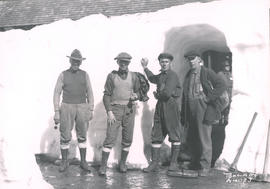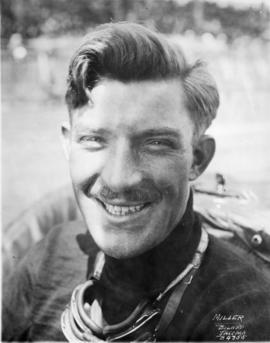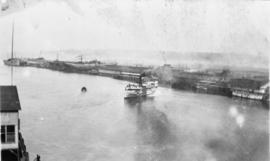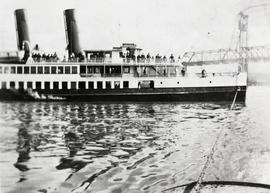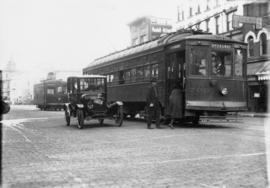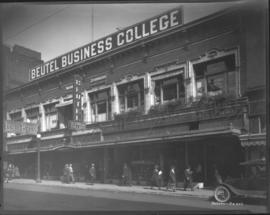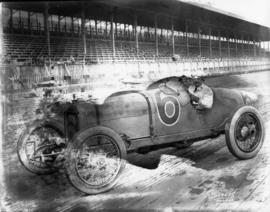- Item
- 1921-12-17
Part of Marvin Boland Photographs
A large crowd gathered for the dedication of the Fairfax Bridge (also known as the James R. O'Farrell Bridge or Carbon River Bridge) on December 17, 1921. At the time of its construction, it was the highest bridge in the state, rising 240 feet above the Carbon River. The one-lane bridge was built to provide automobile access to the coal mining towns and mills, and the Carbon River region of Mount Rainier National Park on the far side of the river. The bridge is still one of only two extant three-hinged steel arches in the state, with a length of 494 feet. It has a 240-foot three-hinged spandrel braced rib deck arch, two 14-foot steel towers, and two timber trestle approach spans. It cost $80,000 to build and is a fine example of extensive lattice work. (TNT 12-19-21, p. 13; www.wsdot.wa.gov/environment/eao/culres/bridges/bridge_pierce_072.htm, www.nwhighways.amhosting.net/165.html) G15.1-038B; TPL-8485
Bridges--Washington; Fairfax Bridge; Dedications--Washington--1920-1930;
